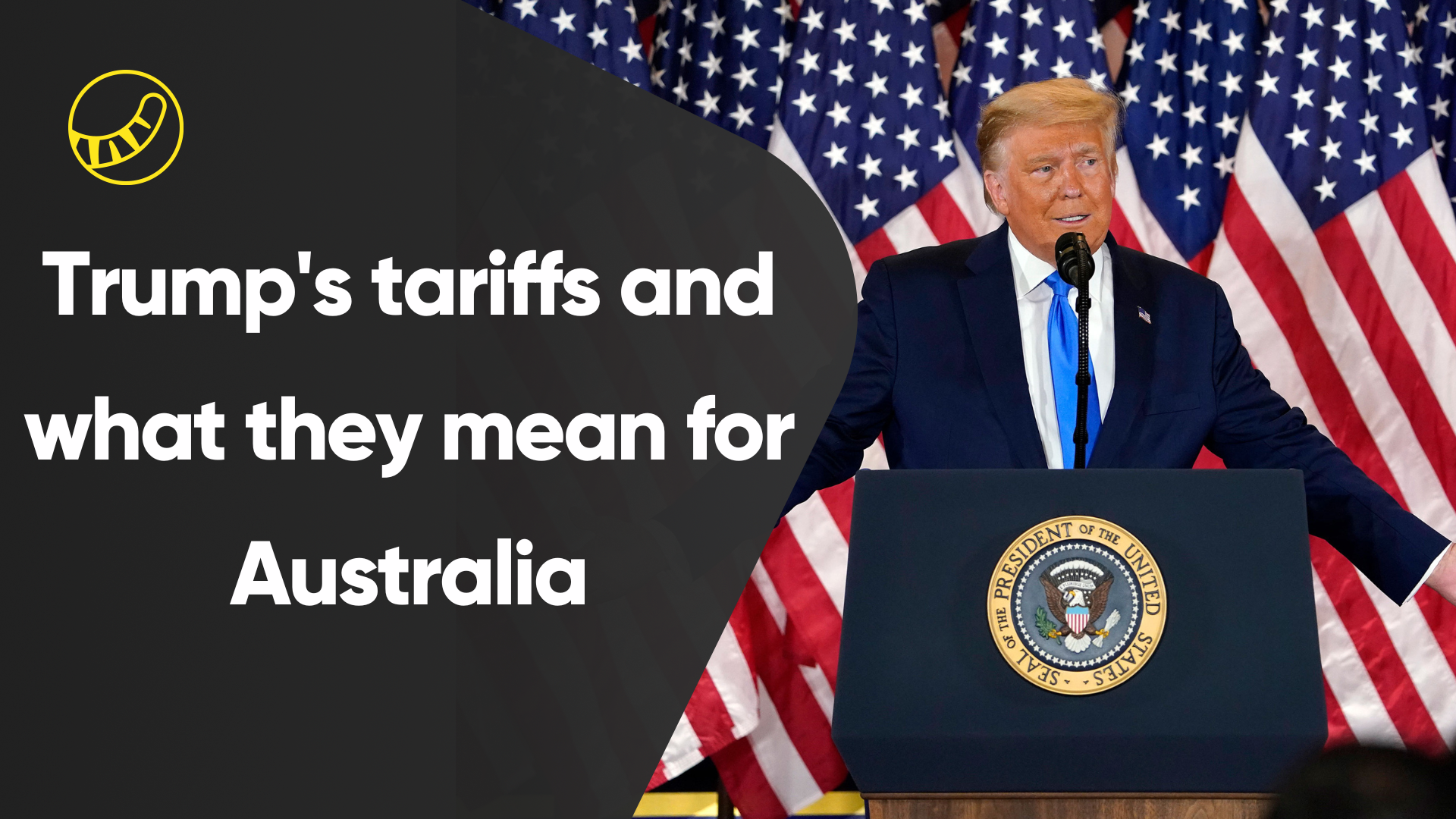Donald Trump’s landslide 2024 election win signals a second term focused on bold policy shifts, including higher tariffs, immigration crackdowns, and tax cuts. These measures aim to prioritise US industries but could have significant global impacts. For Australia, a key US ally and trading partner, Trump’s policies could alter trade dynamics, investment flows, and market stability. The potential effects on the US and Australian economies could have substantial implications for Australian markets and businesses.
Overview of Trump’s policies
Trump’s trade agenda emphasises the use of tariffs to protect domestic industries and achieve economic self-reliance. Proposals include tariffs ranging from 10% to 20% on imports, with rates as high as 60% for goods from China. Key measures include retaliatory tariffs against countries imposing higher duties on US exports, mandates requiring federal agencies to purchase US-made essential goods, and restrictions on foreign acquisitions of critical US infrastructure. While these policies aim to boost federal revenue and domestic manufacturing, they carry the risk of higher production costs and potential retaliation from trade partners.
To further support US businesses, Trump proposes reducing corporate taxes for domestic manufacturers and imposing tariffs on companies that outsource production. While these measures aim to make foreign goods less competitive, they may also raise production costs for US manufacturers.
Trump’s tax policies aim to extend the 2017 tax cuts, further reducing the corporate tax rate to 15% from 21%, increasing standard deductions, and lowering individual income tax rates. He also proposes eliminating the SALT deduction cap and restoring immediate deductions for corporate investments in equipment and research. Additionally, Trump suggests tax exemptions for tips, Social Security wages, and overtime pay, designed to support middle-class workers.
On immigration, Trump proposes mass deportations of undocumented immigrants and stricter limits on legal migration. These measures could reduce labour availability, drive up wages, and increase costs, potentially slowing economic growth in sectors reliant on immigrant labour.
Impacts on the US economy and markets
Trump’s tariff policies have spurred domestic production in some sectors, particularly those tied to national security and energy independence. However, higher tariffs on imports, including those from China, are projected to raise household costs, reduce after-tax incomes across all income groups, and slow economic growth.
Despite these challenges, certain US industries, such as energy, have experienced growth under policies prioritising domestic production and deregulation. This has created new opportunities for international partnerships and investments, particularly in sectors like oil and gas.
Australia-US economic partnership
Australia and the United States share a robust economic partnership built on significant trade and investment ties. Australian exports, including beef, wine, and minerals, play a vital role in the US markets, while Australia imports high-value goods such as aircraft and machinery. The US-Australia Free Trade Agreement has eliminated most tariffs, further strengthening economic ties. Additionally, the US is Australia’s largest investor, supporting key sectors like mining, energy, and technology.
Trump’s trade policies, particularly those affecting global market dynamics, could have significant implications for Australia. As the US enacts protectionist measures or alters its trade agreements, Australian industries tied to US demand may face challenges. Moreover, shifts in the US dollar’s strength under Trump’s policies impact exchange rates, benefiting Australian expats but potentially pressuring the Australian dollar.
Implications for the Australian stock market
Trump’s policies could create ripple effects on the Australian stock market, particularly in sectors reliant on global trade. Heightened US-China trade tensions, driven by higher tariffs, may disrupt supply chains and reduce demand for Australian exports such as iron ore. Given China’s role as Australia’s largest trading partner, a slowdown in its economy would directly affect Australian mining and resource stocks.
Increased US protectionism may also impact Australian industries reliant on American markets, including agriculture and manufacturing. Last year, Australia exported $33.6 billion in goods and services to the US, roughly half of the $65.1 billion it imported from the US. While AUSFTA shields Australia from direct tariffs in its trade with the US, Trump’s history of renegotiating agreements raises concerns about long-term trade stability.
Trump’s energy policies, favouring increased oil and gas production, could bolster US energy stocks, indirectly influencing Australian fossil fuel investments. Conversely, his rollback of climate initiatives might challenge Australian renewable energy firms.
Currency movements under Trump’s policies also hold significance. A stronger US dollar and a weaker Australian dollar could benefit Australian exporters while increasing costs for companies reliant on imported goods, creating mixed outcomes across the share market. Investors should prepare for heightened market volatility as global trade, fiscal, and monetary policies evolve under Trump’s agenda.
How will Trump's proposed tariffs affect the stock market? We will have to wait and see. Download the Tiger Trade app to stay updated with the latest stock market news and find opportunities!
Capital at risk. See FSG, risk disclosures, PDS, TMD and T&Cs via our website before trading.
Information provided may contain general advice without taking into account your objectives, financial situations or needs.
Tiger Brokers (AU) Pty Limited ABN 12 007 268 386 AFSL 300767

